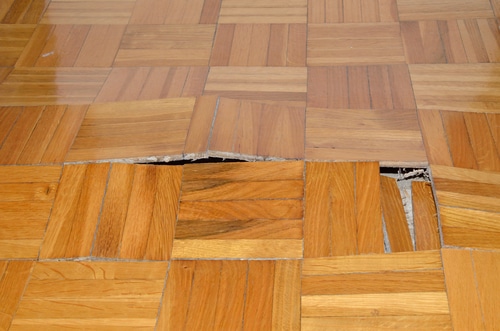Exactly how to Find and also Repair Service Water Leaks-- A Comprehensive Guide
Exactly how to Find and also Repair Service Water Leaks-- A Comprehensive Guide
Blog Article
The content below relating to Top leak detection hacks is exceedingly remarkable. Check it out for your own benefit and decide what you think of it.

Early detection of dripping water lines can reduce a prospective catastrophe. Some small water leakages might not be visible.
1. Take A Look At the Water Meter
Every residence has a water meter. Checking it is a surefire manner in which helps you discover leaks. For beginners, turn off all the water resources. Guarantee no person will certainly flush, make use of the tap, shower, run the cleaning machine or dishwashing machine. From there, go to the meter and also watch if it will transform. Given that nobody is utilizing it, there need to be no activities. If it relocates, that suggests a fast-moving leak. If you find no adjustments, wait a hr or 2 as well as examine back again. This indicates you might have a slow leak that might even be below ground.
2. Examine Water Intake
If you find abrupt modifications, despite your usage being the very same, it implies that you have leakages in your plumbing system. An abrupt spike in your costs indicates a fast-moving leak.
On the other hand, a stable increase every month, despite the same routines, reveals you have a slow-moving leak that's also slowly intensifying. Call a plumber to thoroughly check your building, especially if you really feel a cozy area on your floor with piping underneath.
3. Do a Food Coloring Examination
30% comes from toilets when it comes to water usage. Test to see if they are running properly. Decrease specks of food color in the container and wait 10 mins. There's a leak between the tank and also bowl if the color in some way infiltrates your dish throughout that time without flushing.
4. Asses Exterior Lines
Do not forget to check your outside water lines also. Test faucets by attaching a yard pipe. Must water seep out of the link, you have a loose rubber gasket. Change this and guarantee all links are tight. If you have actually got a lawn sprinkler, it will certainly help get it skillfully took a look at as well as maintained yearly. One small leakage can throw away lots of water and surge your water expense.
5. Analyze the scenario and inspect
Property owners need to make it a behavior to inspect under the sink counters and even inside closets for any type of bad odor or mold development. These 2 red flags show a leak so punctual attention is called for. Doing routine examinations, also bi-annually, can save you from a major issue.
Examine for discolorations as well as compromising as the majority of pipes and also appliances have a life span. If you think leaking water lines in your plumbing system, don't wait for it to intensify.
Early discovery of dripping water lines can mitigate a possible calamity. Some tiny water leakages might not be noticeable. Inspecting it is a surefire way that aids you find leakages. One small leak can waste lots of water as well as spike your water bill.
If you suspect leaking water lines in your plumbing system, do not wait for it to intensify.
How to Know If Your Home Has a Hidden Leak
Water Meter Reveals Inexplicable Water Usage
If you’d like to test whether or not there’s a leak somewhere in your home, you can do this using your water meter. Here is how to conduct the test:
Don’t use any water in your home for at least 30 minutes; this also means not turning on faucets or water-using appliances.
Go outside, and check your water meter for activity.
If your water meter shows that there was activity, even though no one was using any water, this proves that there is a leak in your home.Visible Mold or Mildew Growth
Leaks behind walls create moist, dark environments that allow mold and mildew to grow and thrive. Eventually, you might see mold growth forming on the wall closest to a hidden leak.
If mold is growing in an area that receives a high amount of moisture, such as a bathroom, it may simply be an indication that better ventilation is needed. However, if you see mold growth on a wall or the ceiling in an area where you would not expect, you probably have a hidden leak.
Musty, Mildew Odor
Sometimes you might not be able to see the mold or mildew that is growing as a result of a leak. However, the smell can give the problem away just as easily. If you catch a whiff of something musty, there’s a good chance that old water is collecting somewhere in your home that you can’t see.
Stained/Warped Walls, Ceilings, or Floors
When your home soaks up water, a variety of red flags can become visible, including ceiling stains, bubbling drywall, warped walls, and sagging floors. While these issues can be caused by excess humidity, they can also be signs that a pipe or plumbing connection has started leaking behind your walls.
Inexplicably High Water Bill
After a while, you get a general sense for what your water bill should be. If you own a pool or sprinkler system, your bill will tend to be higher during summer. However, if you receive a water bill that seems especially high, and you can’t figure out what caused it, then you may have a hidden leak somewhere that’s increasing your bill.
https://www.plumbingjoint.com/blog/2019/july/how-to-know-if-your-home-has-a-hidden-leak/

We were shown that editorial about Top leak detection hacks from a friend on a different website. Those who enjoyed our blog entry please make sure you remember to pass it around. I am grateful for your time. Please check up our blog back soon.
Report this page